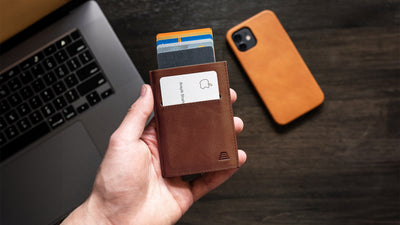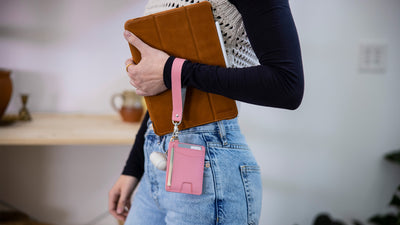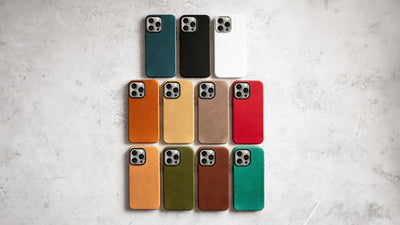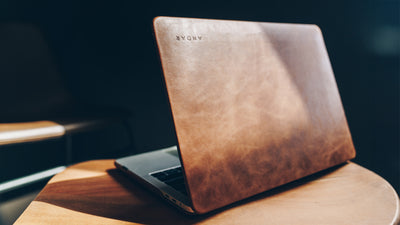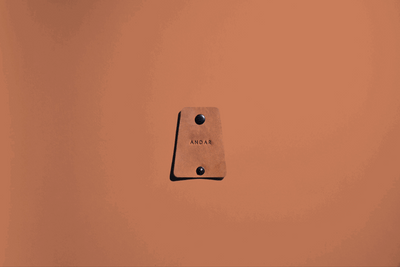The Blog
How To Emboss Leather in 8 Simple Steps
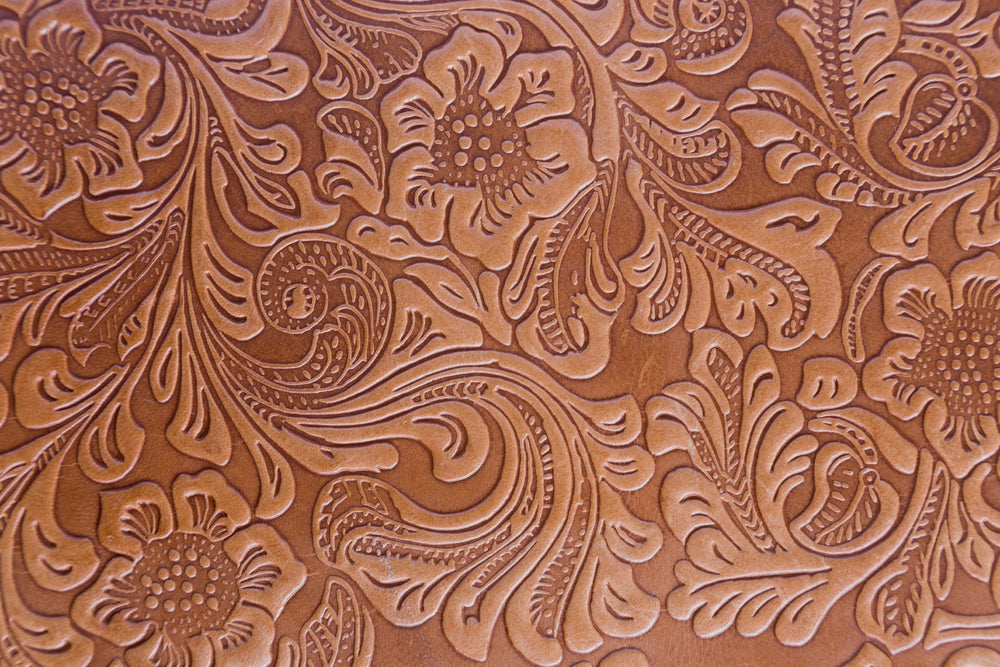
Embossing leather is a great way to customize your clothes, furniture, bags, wallets, and other leather products. With the right tools, you can create DIY leather designs right at home. You can craft thoughtful, personalized leather gifts for friends or family or add a touch of artistry to accessories or clothes.
At Andar, we know that with careful attention to detail, you add real charm and character to beautiful leather craft pieces. Follow us through this step-by-step guide, and learn how to emboss leather in eight simple steps.
Considerations: Material Choice
When embossing leather, the first and foremost important step is choosing the most suitable material. Even for the skilled leather worker, there are only so many tricks to use while working with low-quality material.
With a lower-grade material, your embossed designs will quickly fade over time or else become morphed or flattened. Low-quality faux leathers like pleather tend not to make ideal embossing candidates since they tend not to stand up to high amounts of pressure and the tools needed to make those iconic marks.
Authentic, full-grain leather offers more flexibility and durability as you work with your various embossing tools. You might also prefer a vegan material, as seen in The Indie in Saguaro, made from cactus leather. It has much of the attractive, earthy, and resilient sheen that we love about full-grain leather.
Should I Emboss Finished or Unfinished Leather?
Alongside finding quality, full-grain leather, double-check that the material you’re working with does not have any kind of finish applied to it. Finished leather has a coating of oils and waxes applied to protect it from damage.
Unfortunately, the protecting oils and waxes used in finished leathers will work against the embossing process, making the surface of the leather more resistant to the pressure and tools you're using. Unfinished leather is more malleable and can be easier worked with to create lasting imprints.
Can You Emboss Suede or Nubuck?
Suede and nubuck are types of leather materials that are sanded to create a softer, more velvety leather finish. However, the sanding process removes some of the strength and durability of the leather by shortening those rich, protein-filled fibers and thinning out the material.
That doesn’t mean these materials can’t be embossed. In fact, they commonly are, but it will require some more delicacy on your part. You might want to avoid using machine-pressured tools or overly sharp stamping tools.
Planning: Gathering Tools
A few different tools can emboss leather, depending on what kind of pattern or shape you’re going for and what type of embossing you’re doing. For instance, embossing in the field of bookbinding will likely demand a slightly different set of tools than those needed to make a leather jacket pop.
Most of these tools use pressure in order to imprint or engrave your leather with a unique design. The best part is that this is where your real creativity can shine.
Additionally, there are several other tools you’ll want to have on hand to protect your leather material — let’s get into that now.
Tools To Protect Leather While Embossing
Before starting, review the tips below to ensure the embossed pattern or design stays in place without becoming flattened, creased, or bent out of shape.
- One method is to bond or laminate your leather material with a foam material. This should hold the embossed design in place, protecting it from hard surfaces or excessive pressure.
- Run a damp sponge over the surface of the leather before you work on it. Damp leather can make your embossed design come through a lot sharper and improve durability.
- When cutting a piece of leather less than one millimeter thick, use a rotary cutter. A hobby knife is likely to tear and crease the leather. Traditional sewing scissors won’t do much good here; you’ll want leather shears, strap cutters, or mallet dies, especially for thicker leather.
- Note that a dull blade can ruin the fibers on the edges of the leather, causing them to stand up or get fuzzy.
A Sturdy Work Table
A well-built work table is an essential tool for your leather project. Especially if you’re working with pressure tools like leather stamps, you’ll want a sturdy work surface that can withstand the power.
For added stability, you can fasten your piece of leather to the work table with a c-clamp, preventing it from moving or shifting as you work.
How To Emboss With Leather Stamps in 8 Steps
A common way to emboss leather is by using pressurized, custom leather stamps. Your design, monogram, or logo is imprinted onto a stamp, which is then pressed into the leather.
The important thing to remember here is that the more pressure you use and the longer you hold it, the stronger your embossing will be. Some leatherworkers will use a wooden mallet to carefully tap the back of the stamp and increase the pressure.
If you’re working with metal embossing stamps, be cautious that your stamping tools are kept dull or flat on the front side. Otherwise, you may risk puncturing your leather.
- Cut the leather into your ideal shape first. Cut the leather on the rougher-looking side, also called the “flesh side.” You will also emboss on this side.
- Wet the leather on both sides, starting with the flesh side. Moisten a sponge with water to soften the leather. We love leather for its strength, but this same attribute can make embossing a tad tricky. Use a cautious hand here — the leather should be damp, not wet. You may need to re-wet the leather throughout the process, especially for time-intensive or large projects.
- If you are punching any holes, now is the time to do this (this step is optional).
- Place the leather on a piece of hardwood (check your local DIY or construction store).
- Check the leather is totally flat, then carefully press the leather stamp into the material.
- Hammer the stamp into the material a few times. Keep the stamp as stable as possible (holding it with your hand is best.
- Repeat as needed.
- Note: Before adding additional details (like embroidery), the leather should be completely dry.
Final Considerations: Add Some Color
This last step is optional but can definitely add some vibrancy to your embossing.
Some leather workers use foil stamping kits. These are typically mechanical tools that use heat to press a metal foil into an embossed pattern. The result is a shiny, metallic design that looks deeply elegant. The foil can be silver, gold, bronze, or any other metallic color.
Others may use stamping tools with leather dyes and inks incorporated into them.
For leather crafters at home, perhaps try leather paints. These water-based paints are loaded into a paint applicator bottle with a fine tip. After stamping your leather, go over the embossing with the fine tip, letting the paint naturally drip onto the pattern.
Show Your Leather Love With Andar
We hope this guide has been useful to you as you embark on your embossing journey!
At Andar, we’re passionate about crafting leather products from the most durable, full-grain leather materials. Not only that, but we love helping you take care of your five-star-quality leather products and learn new ways to customize your style.
But if DIY leather working isn’t for you, we’ve got a variety of leather goods available, including unique embossed designs like our Apollo Wallet.
If you love the art of leatherworking, check out our resources collection to learn more about a life well carried.
Sources:
Gold Tooling, Embossing, Stamping or Blocking. Which one is it? | The University of Adelaide
